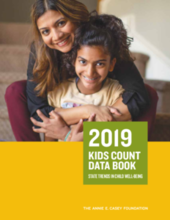Displaying 171 - 180 of 498
The aim of this study was to assess the feasibility and acceptability of a home‐based intervention—Amagugu Asakhula—to promote nurturing interactions and healthy behaviours with the caregivers of preschool children.
This open access article details a culturally informed approach by sharing the findings of a Cultural Healing Program (CHP) designed, developed and delivered by an Aboriginal Community Controlled Organisation. The program was for Aboriginal survivors of institutional child sexual abuse who had also experienced cultural abuse having been forcibly removed from their families as children and in the process disconnected from their communities, culture and land.
This study explores facilitators of and barriers to effective collaboration between workers at partner organizations working on a program focused on the reunification of housing-unstable families with their children in out-of-home placement in the US.
This situation analysis explores multidimensional poverty in Uganda, including an examination of both material and social needs of children – including health care and education, a social and family life, clean and safe drinking water, housing that is not squalid and overcrowded, adequate clothing, and regular meals with sufficient and nutritious food.
This study aimed to identify longitudinal trajectory classes of child protective services (CPS) contact among Alaska Native/American Indian (AN/AI) and non-Native children and examine preconception and prenatal risk factors associated with identified classes.
This issue brief addresses the following questions: What are family resource centers? What are the defining characteristics of a family resource center? What do we know about the effectiveness of family resource centers in reducing child welfare involvement? What is the return on investment? What is missing from the research literature?
This article reports on a study of the relationships between child protection system contact and small area-level deprivation in New Zealand. The study found that, compared to children living in the least deprived quintile of small areas, children in the most deprived quintile had, on average, 13 times the rate of substantiation, 18 times the rate of a family group conference, and 6 times their chance of placement in foster care. Findings suggest that action is needed to address the causes of deprivation, provide services that respond to families living in poverty, and undertake further research to examine the interactions between demand and supply of services across deprivation levels.
This Data Book from the Annie E. Casey Foundation explores how the child population, and childhood experience, of the US has changed since 1990. It also presents national and state data on 16 indicators of child well-being across four domains — health, education, family and community and economic well-being.
This study explored the social images of families of children and youths in residential care in a sample of 176 participants with and without professional contact with this population.
This report presents analyses of selected outcomes for Aboriginal and Torres Strait Islander children who live in households with members of the Stolen Generations.




